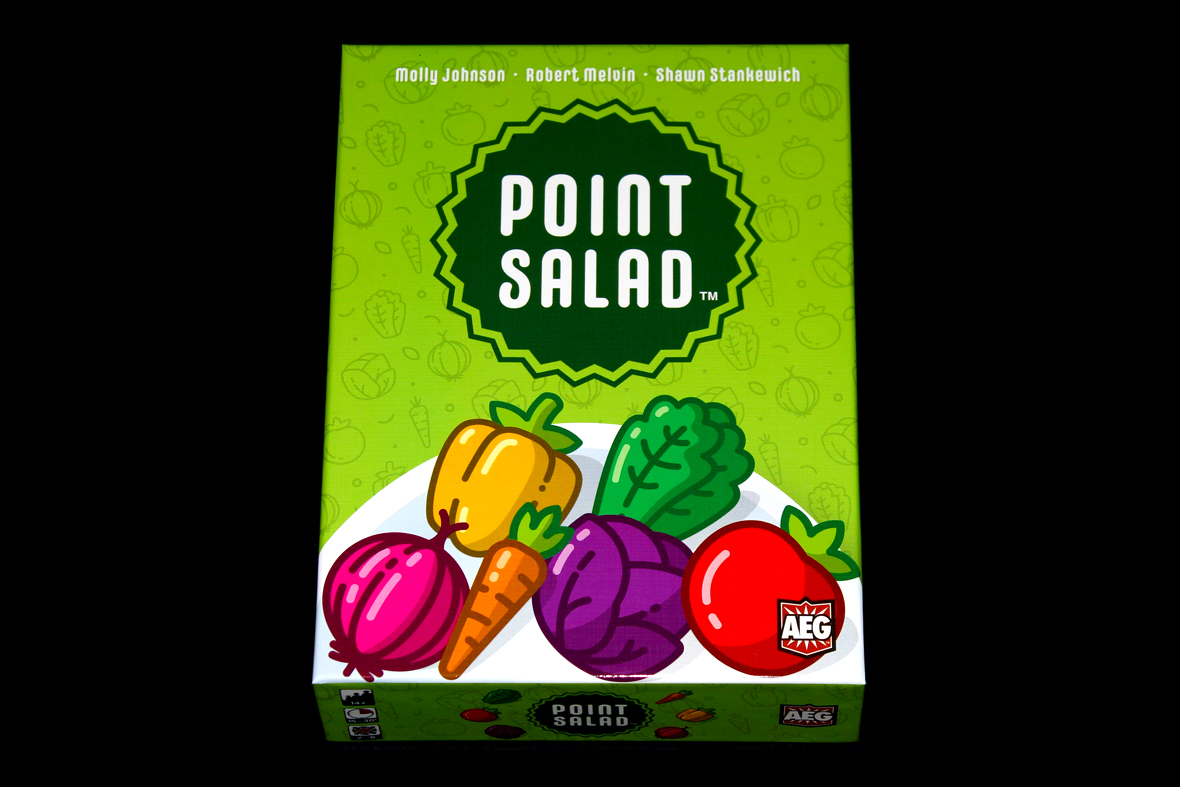
Base price: $20.
2 – 6 players.
Play time: 15 – 30 minutes.
BGG | Board Game Atlas
Buy on Amazon (via What’s Eric Playing?)
Logged plays: 5
Full disclosure: A review copy of Point Salad was provided by Alderac Entertainment Group.
I’m still running a giveaway this week for two copies of Catch the Moon! Find out more here.
And on to the second of the Big Game Night games from Alderac! The third, Walking in Burano, I reviewed a while back (courtesy of EmperorS4), is also excellent, so, solid showing from AEG this year, actually. Previously, I talked about Curios, a pretty-great deduction game of archaeological theft. Sad theme, fun game. That leaves Point Salad, a game I’ve heard nothing but good things about, which is exciting. So, let’s get right to talking about it.
In Point Salad, you’re making a salad, and you think you have everything you need! Lettuce, tomatoes, carrots, peppers, onions, and … cabbage. I guess for the color. Not going to lie, I’m a bit concerned about whoever thinks you can make a salad without cucumbers, but, hey, whatever, I guess that’s the fresh nightmare I’m in right now. They’re a critical part of a salad from a texture perspective. Anyways. I got that off my chest. The thing about this particular salad is that it’s a bit unique — every card offers its own unique way to score. How are you going to assemble these particular vegetables for a satisfying mix?
Contents
Setup
Essentially none. Divide the cards into the different veggie types:
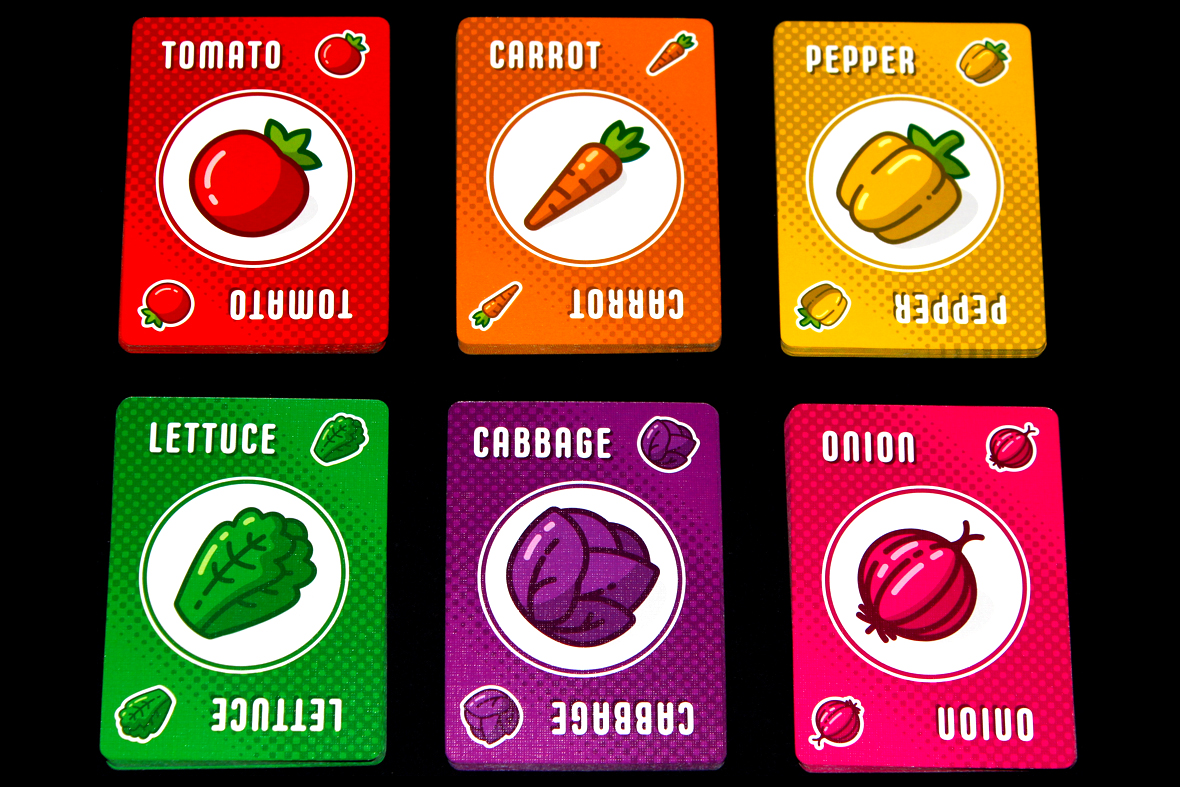
There are 18 of each type in the deck, normally, so you’ll need to use fewer if you have fewer players:
- 2 players: Use 6 of each veggie.
- 3 players: Use 9 of each veggie.
- 4 players: Use 12 of each veggie.
- 5 players: Use 15 of each veggie.
- 6 players: Use all 18 of each veggie.
The nice thing is, you can make three sets of “decks” for two players or two “decks” for three players so you can quickly play another game once you finish the first one (and you’ll want to play another game afterwards). It’s sort of like solo Herbaceous. Either way, shuffle the deck and split it into three equal piles with the back side up, showing the scoring conditions:
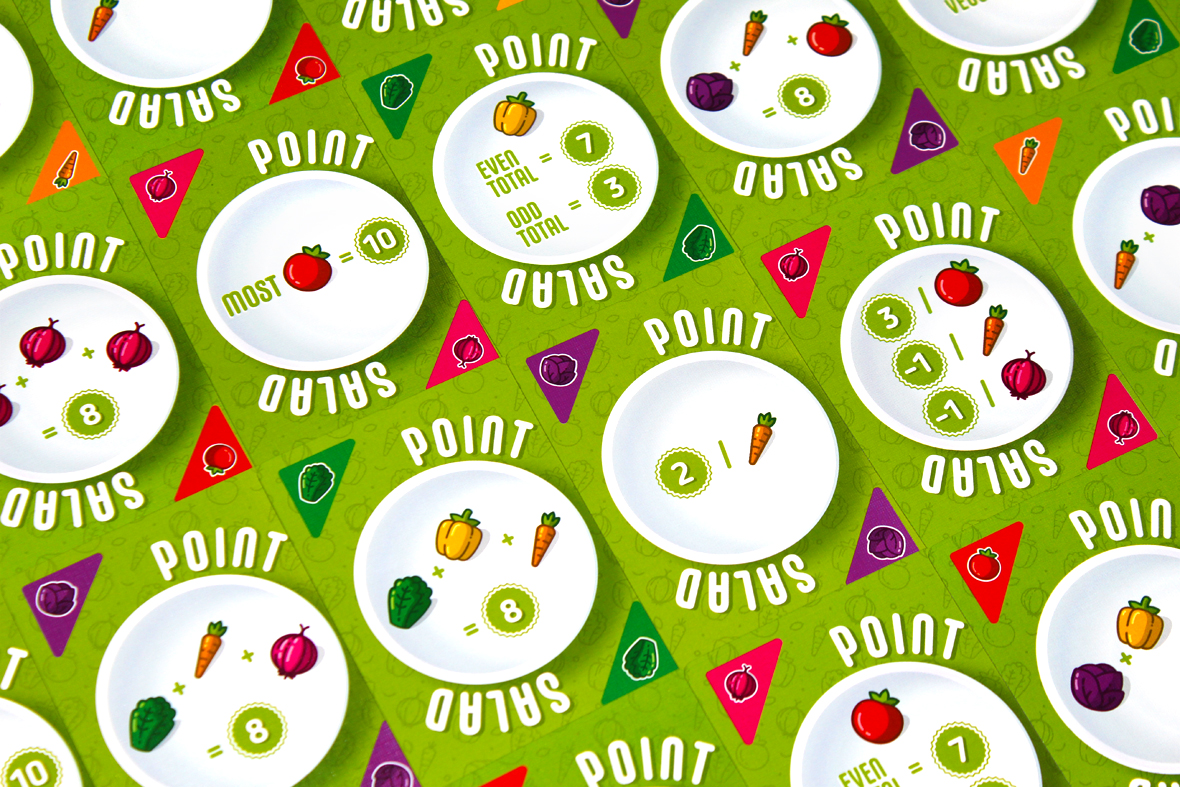
Flip two cards from the top of the deck face-up, so you have three stacks with two veggies below each. Choose a player to go first and you’re ready to start!
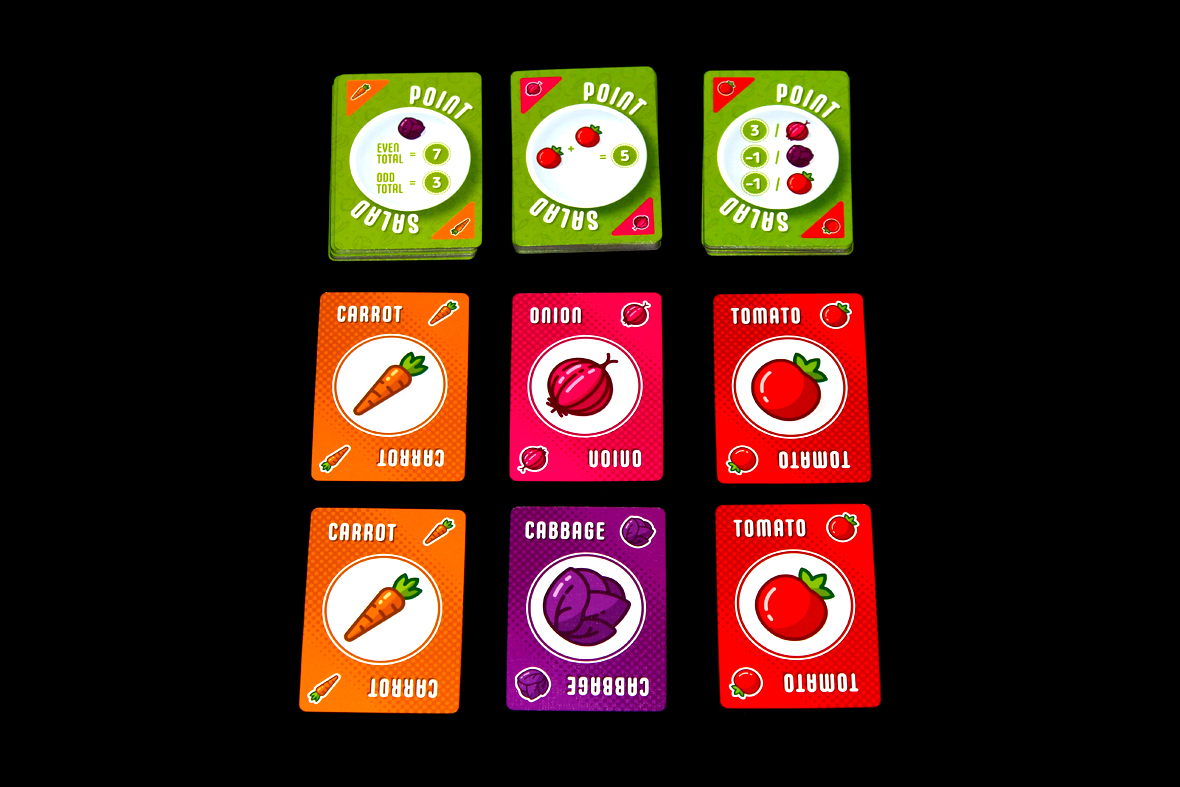
Gameplay
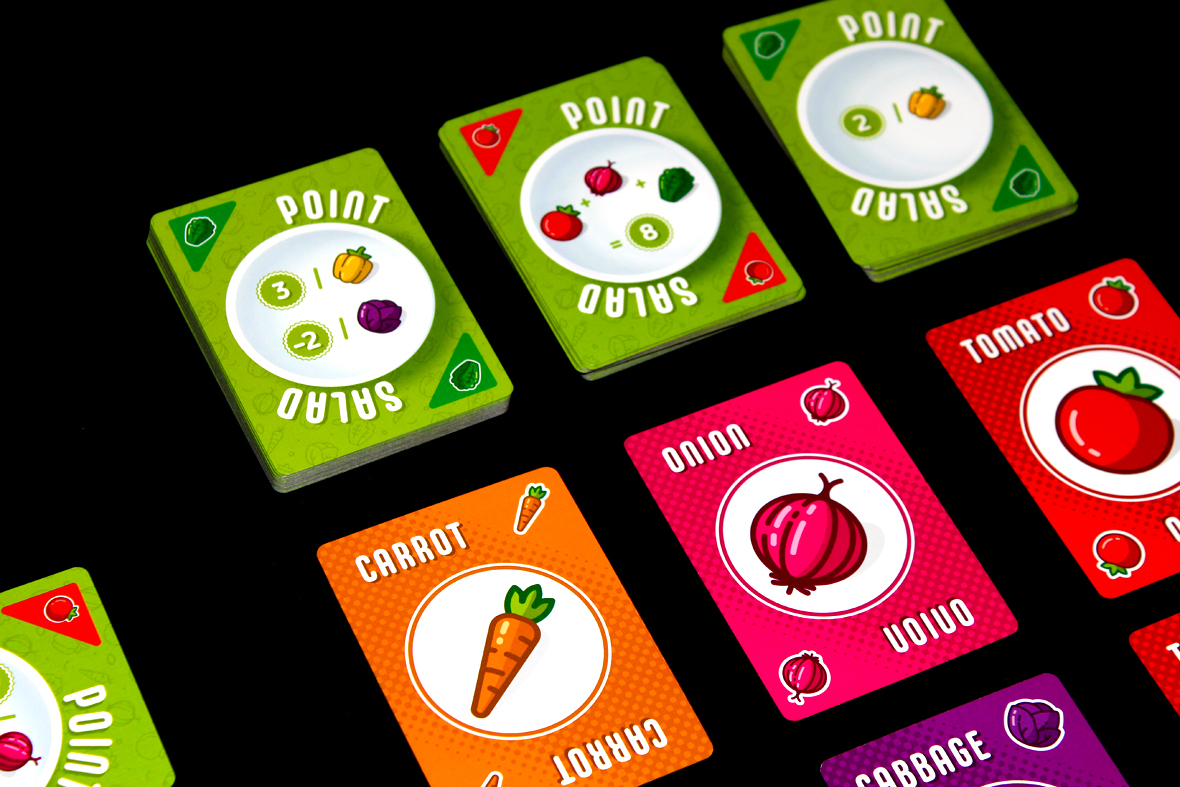
The cool thing about this game is that it’s very easy to play. Almost nothing to talk about in gameplay.
On your turn, you may take any two veggies or any one scoring condition card. If you take veggies, refill them from their corresponding decks. If the deck runs out, find the biggest deck, split it in half, and put the bottom half in the now-empty deck spot.
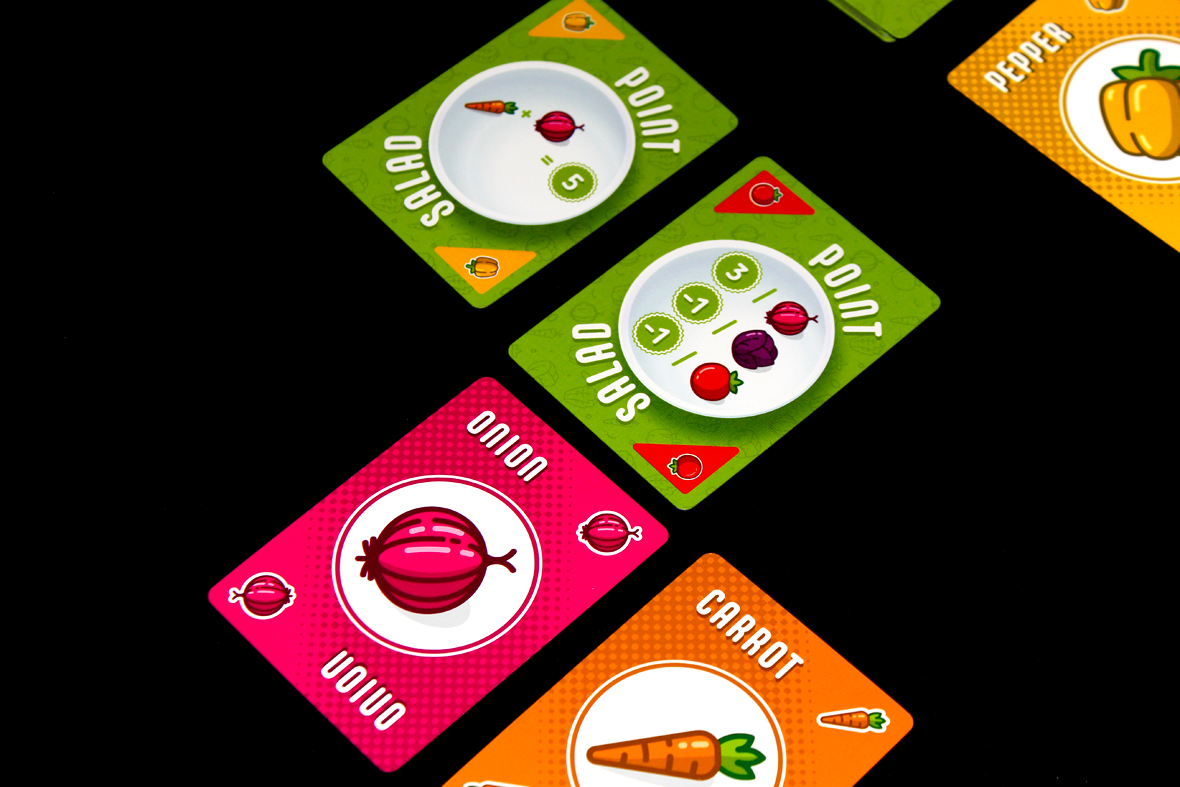
Once per turn, you may flip any of your scoring conditions to their veggie side. You may not flip any veggies to become scoring conditions, no matter how badly you wish that you could.
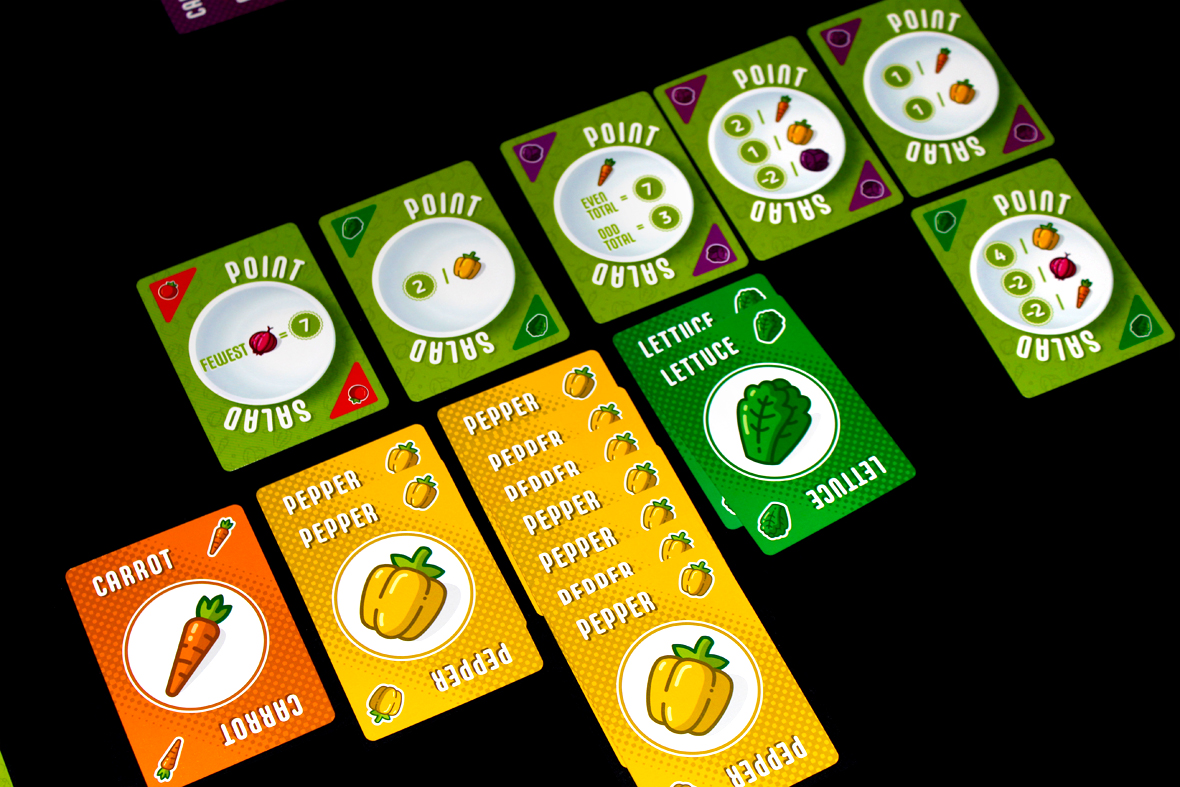
That’s … pretty much it. The game ends after all cards have been taken. When that happens, use your scoring conditions to score your veggies. Each point card may be scored more than once, and each veggie must be used for every point card that refers to it, even if that means you get negative points for it. If there’s something weird like a tie for fewest Tomatoes, the player with the scoring card breaks the tie in their favor.
The player with the most points wins!
Player Count Differences
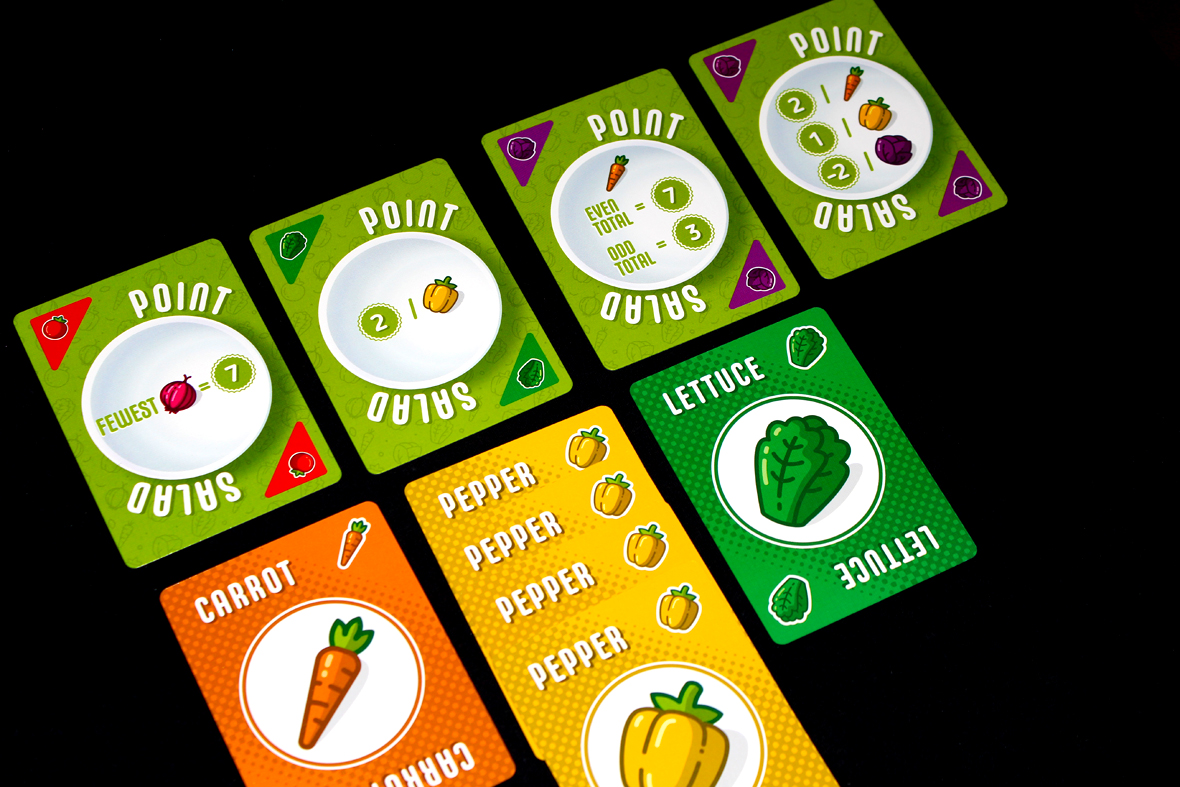
There are a few — for one, you have some slightly improved odds of getting certain synergies at higher player counts, since it’s more likely those points cards will be in play. However, since more players are pulling more cards, you’re less likely to see them, generally (which is, to be fair, still better than your odds of getting them if they aren’t in the game, which is 0). At higher player counts, the one problem I do have emerges, which is that like many point salad games it becomes unclear if you should block one player from scoring or help yourself. It’s very difficult to win if you just block other players, I would argue, so I definitely endorse helping yourself, but there are also a lot more people active in the game. Personally, I don’t have a problem with any player count, but I do enjoy it a lot at two. It’s tight, simple, fast, and it’s really easy to play three games consecutively.
Strategy
- Take things you want or need. I think this generally seems pretty straightforward, but I try to recommend this instead of trying to hate-draft your way through the game. One thing that you’ll need pretty early on are some scoring cards, otherwise you’ll put yourself into a weird bind where you may not be able to score that many of your veggies! The problem is, as soon as you take a scoring card, everyone knows exactly what you need…
- Try to minimize negatives. Again, if you want to score points, this is generally a good idea. I’m not saying you won’t take a few (if your opponents are playing well, you’ll likely take some), but you should really work hard to minimize those negatives, if you can.
- Check out what your opponents need to score. The scoring conditions are public; you should be able to tell exactly what your opponents are trying to get so that they can win. If you know what cards they need, you know what cards you should try and take.
- Check the Scoring Condition Cards so that you know what you’ll reveal when you take veggies. That’s a key way to hate-draft while still benefiting yourself in this game. If I am trying to deny Peppers to my opponent and taking one of three Lettuces will reveal a Pepper card, I should take the other two. If I want to eliminate Scoring Condition Cards that my opponent wants, I should take veggies from those columns.
- You should consider losing scoring conditions if they’re not giving you anything useful. You can convert them back into veggies, which can be useful. Just remember that you can only do one per turn.
- Try to avoid going all-in on one veggie. If you try that, some players will take your veggies and others will take the Scoring Conditions Cards that you need to make those cards valuable. A spread is probably going to be better in the long-term. Or at least more viable.
- There’s no real “recommended number” for any veggies. I can’t tell you how many of each you should have. If you are going for fewest of something, get 0. If you want most, take as many as you can find. Any card can come up, so, try to stay flexible.
- It is unlikely you will get everything you want or need. Prepare accordingly. You should probably not try to strategize too much in this game; I feel like it’s more of a tactical title.
- Remember how many of each veggie there is in the deck. You don’t want to be looking for Peppers only to realize much later that they’ve all already been claimed. Just keep a general sense going of how many have been picked up and how many there are left.
Pros, Mehs, and Cons
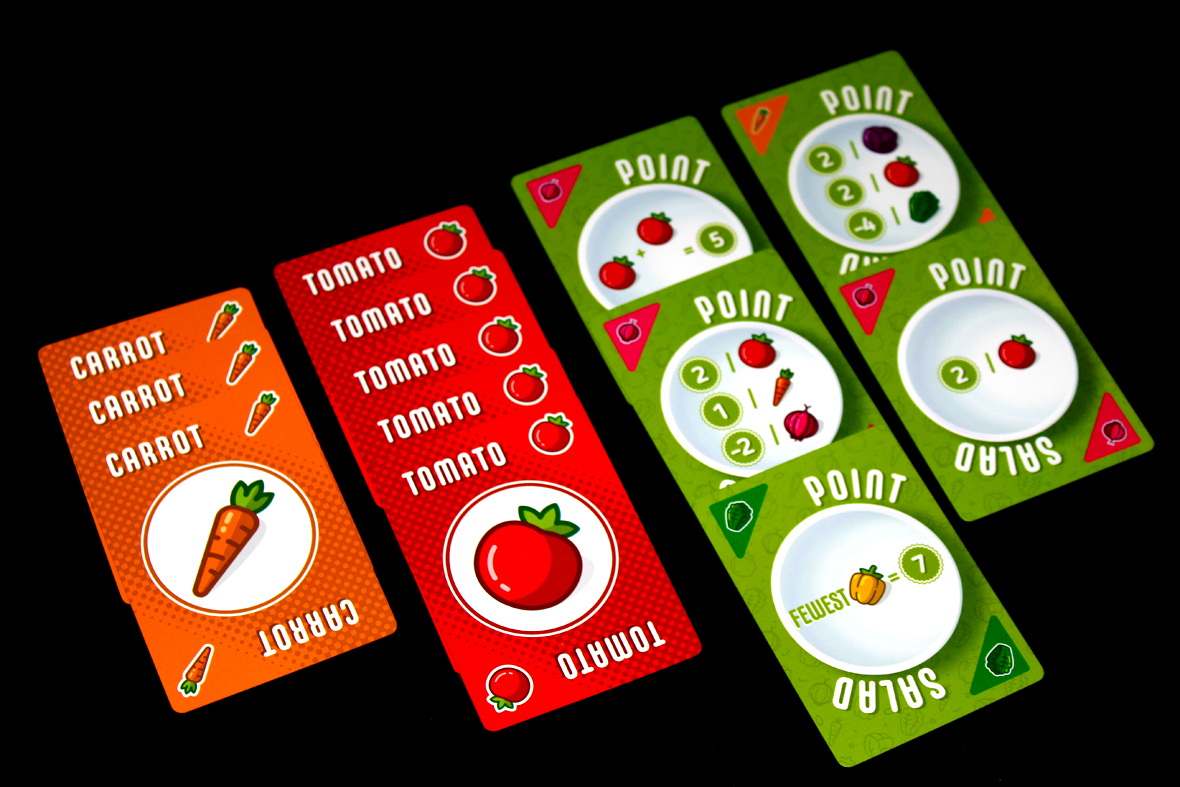
Pros
- Love the art. It’s very whimsical.
- The coloring is great too. When you have the game on the table it looks super good! It’s bright, colorful, and inviting? And who doesn’t love a salad? I find them disappointing, generally, but I’m sure other people like them just fine. Either way, good choice of ingredients to get a nice little rainbow effect, though I’m still astonished cucumbers were omitted.
- Very portable. You can slide this into a Quiver super easily. There are only 108 cards; you barely even need the rulebook.
- I love that every card has its own scoring condition. Makes games super interesting as you go through multiple cycles of them, as different cards combo with other cards to set up different scenarios where they’re useful, so it ends up being a pretty variable experience. I’m really into multi-use cards and the like, so this is a welcome mechanic in a card game.
- I really like that they mention in the rules how to set up for quick repeated games. It’s reminiscent, as I mentioned previously, of Herbaceous’s solo mode, where they’d just recommend flipping the removed cards over and starting a new game with those once you finished the first one. It meant that I never played an odd number of Herbaceous solo games.
- Smart, simple little game. It has the same sort of design chops that I normally see from Button Shy, in that they’re doing a lot of work in a fairly limited space. It’s a pretty streamlined game, as a result; no unnecessary rules, no extra fluff, just a quick and simple drafting game. I really appreciate that.
Mehs
- I’m hoping the empty part of the box is space for an expansion. Either way the box is pretty large, currently, given that there’s only a single stack of cards in it. Might have been an okay idea to make the initial box small and release a larger box with the expansion? Who knows; I’m not a board game production expert. I’m just out of shelf space.
Cons
- At higher player counts, the market changes so quickly that it can become difficult to plan, which can be annoying. I think this happens in a lot of games where there’s some sort of market that all players can draw from. At lower player counts, it’s easier to visualize what might still be available and plan accordingly. At higher player counts, it can become kind of a mess since so many people are pulling from a lower number of cards. A lot of games expand the market to accommodate that, but here it’s just more volatile. That might be fun for some players and irritate others.
- I’m not a fan of hate drafting, generally, but you will likely have to do some. Just watch out and make sure that players don’t try to dogpile each other. It’s very easy to see one player just tell other players to take the veggies a third player needs, and that’s not … a super fun way to play, in my opinion. Some people like that sort of thing! I just don’t.
Overall: 8.25 / 10
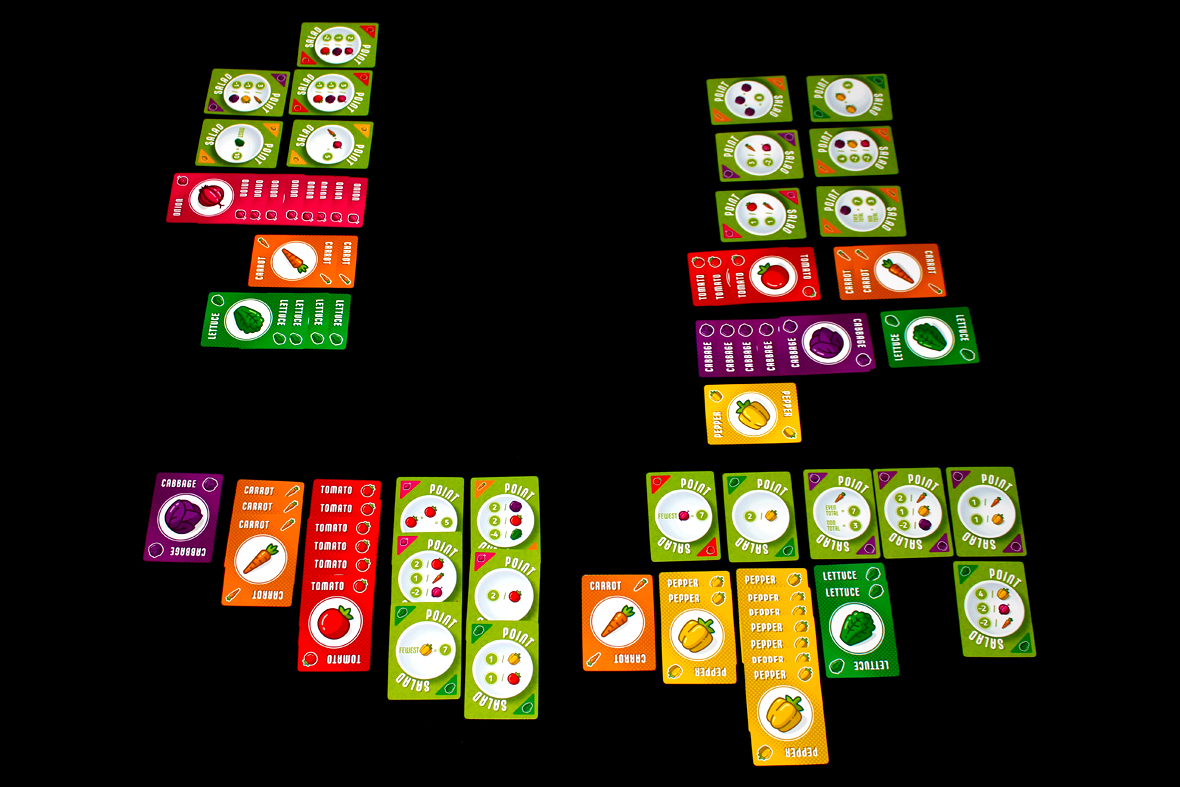
Overall, I really enjoy Point Salad! I generally am pretty favorable towards quick card games, and I think Point Salad is a solid, streamlined version of one! It also helps that it’s got a very attractive table presence. Smart graphic design, cute and whimsical art, and a bold and bright mix of colors come together pretty nicely to make a game that’s super quick to play and great to look at while you’re playing. It also scales well to multiple player counts, even offering some quick-replay options at lower player counts if you want to bust out a few quick games. What I’d love to see is a solo mode, since this kind of stuff is right up my alley, but hopefully that will come along when it’s time to expand and add even more vegetables. Salads may not be my favorite theme of all time, but this game is really doing some solid work promoting for them. Anyways, if you don’t mind a big box, you like quick card games, or you’re looking for a great gift for your vegetarian friend who loves puns and cards, Point Salad is another excellent title from Alderac, and I’d recommend it!
Cute art! Interesting comment on the hate drafting – hopefully most people won’t play it that way!
LikeLiked by 1 person
Yeah that’s generally my hope, too. Never a huge fan of hate-drafting.
LikeLike
Hey there, just wanted to know if there is a specific number of point cards you can have at games end. I see 5/6 cards in pics never more than 6.
LikeLiked by 1 person
Nope! People just kinda regress towards the mean, over time, I guess? Better to focus on a small number of scoring cards instead of spreading yourself thin.
LikeLike